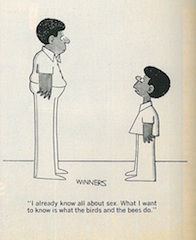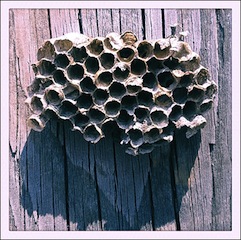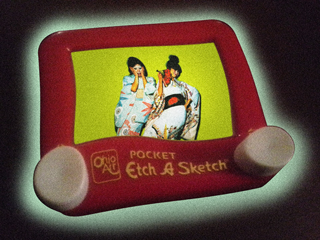- Quotations
- Moloch
- Riddles
- Sport
- Forsaken Edifice
- Etch-A-Sketch
- Wealth
- Action
- Not I
- Coprophagia
- Working Title
- Concepts
- L'Invitation au voyage
- Narrative
-
Big Apple Theme Park
by Peaty
The gentrification of NYC is a double-edged sword. Previously sketchy “border vacuum” areas—a term coined by Jane Jacobs in “The Death and Life of Great American Cities,” in reference to neighborhoods around stations, bridges, and tunnels such as DUMBO, RAMBO, and Hell’s Kitchen—now give way to safe, frolicsome, and yuppie-filled waterfront parks. In 21st century Bloombergian Gotham, the waterfront park is both the City’s greatest asset, yet vexing harbinger. It is a conspicuous symbol of what the Apple and its fine boroughs have become: a theme park for the privileged few who can afford real estate with a view.
-
Oliver Sacks’ Hexagons of the Mind
by Peaty
“Perhaps such experiences [ hallucinatory forms ] are at the root of our human obsession with pattern and the fact that geometrical patterns find their way into our decorative arts. As a child, I was fascinated by the patterns in our house–the square colored floor tiles on the front porch, the small hexagonal ones in the kitchen…These geometric and scrolling motifs seemed somehow familiar to me, though it did not dawn on me until years later that this was because I had seen them in my own head, that these patterns resonated with my own inner experience of the intricate tilings and swirls of migraine…Do the arabesques and hexagons in our own minds, built into our brain organization, provide us with our first intimations of formal beauty? There is an increasing feeling among neuroscientists that self-organizing activity in vast populations of visual neurons is a prerequisite of visual perception–this is how seeing begins.”
– Oliver Sacks (from “Hallucinations”)
-
Museums as the Cathedrals or Mausoleums of Post-Modernity?
by Peaty
(Above Left: St. Peter’s Basilica in Rome / Above Right: MoMA in NYC)While visiting MoMA last Sunday to convene with a small group of friends, I mused upon a recurring inquisition: has the contemporary art museum usurped the church’s position as a surrogate “place of worship”, at least for certain culture-craving demographics?
Aside from the palpable communitarian ethos at a popular museum on any given weekend, such as the Metropolitan, MoMA, or Guggenheim (to name but a few), I am always struck by the flocks who congregate amidst the hallowed halls, quite possibly in search of transcendence, if not the sublime.
-
Strictly for Laughs
by J.R.
-
Mellifluous Cocktail to Soothe the Apiary Blues: the BeeGarita
by Peaty
Pollinators, feel free to buzz on this one at home. Pleazzze, just bee responsible! – Peaty
Peaty’s BeeGarita Recipe
* 2 shots of choice Tequila
* 1/3rd shot of Cointreau
* 1 fresh squeezed lime (tone down lime quantity if you have a sweet tooth and/or hate sours)* 1/4 fresh squeezed lemon wedge* Dash of homemade honey syrup (please see: http://www.examiner.com/article/make-it-yourself-honey-syrup)Combine in mixer and shake on the rocks. Meanwhile, prepare the rim of your glass with freshly ground sea salt. Strain mixture into your glass over the rocks — preferably your favorite apiary glass (as pictured). Enjoy. -
Follies of Comb Architecture: Part I
by Peaty
Behold this vacant wasp-comb fragment, photographed just moments ago in Northern New England. Note how our wasp counterparts invoke the hexagonal comb structure, while opting for wood-fiber construction over our wax secretions. Know your “Comb Architecture BUZZWORDS”!
-
Etch-A-Sketch Teleportation
by Peaty
Inspired by Sparks’ ‘Kimono My House’ album cover (1974), with original Art Direction by Nicholas de Ville




